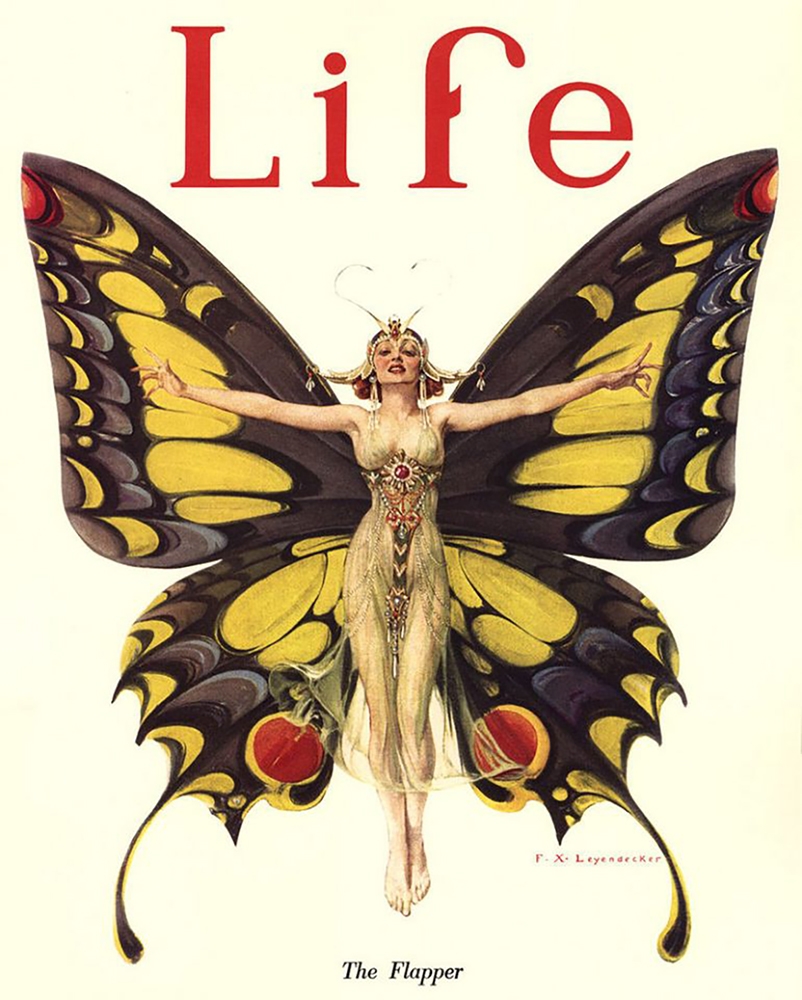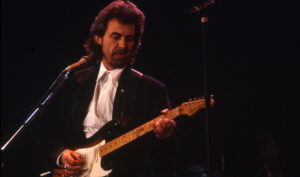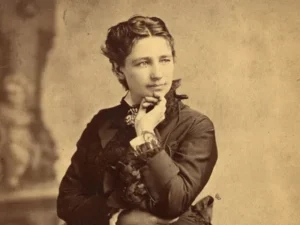Winner of the Fall 2016 StMU History Media Award for
Best Article in the Category of “Culture”
When one thinks of the 1920’s era one immediately thinks about Flappers. A flapper was considered a young woman who was very fashionable. This was a young female who enjoyed life to the fullest, flouting her unconventional standards of behavior and carefree party lifestyle.1 The spirit behind this movement was all about leaving the traditional ways of life behind and transforming into an independent woman.

Before World War I, the concept of femininity was referred to as the Gibson Girl. This term was used to describe these new independent and often well educated women. Gibson girls wore their hair long, pinned up and adorned with beautiful hats. They completed their ensemble by wearing long skirts and blouses that buttoned up to their necks. Despite their feminine appearance, these women were more than capable of doing the same things that men did. Examples of this include activities such as playing sports: skating, golfing, bicycling, tennis. These young ladies did not go out until they were asked properly by a young man who had good intentions and a promise of marrying them. Gibson Girls soon broke away from their traditional ways.2
In 1915, two years before America’s entry into World War I, a famous author by the name of H.L. Mencken introduced the word “Flapper” to the United States. Mencken stated that a flapper was “a woman who consumed music, literature and periodicals voraciously taking her cues for behavior and style from the media in front of her rather than the moral codes of decorum.”3 Another famous author, F. Scott Fitzgerald, famous for his classic novel The Great Gatsby, described the flapper as “lovely, expensive, and about nineteen.” John Held Jr., who was an American cartoonist, emphasized the flapper by drawing young girls wearing unbuckled galoshes that would make a “flapping” noise when walking.4 Despite the many different terms, Flappers were described essentially the same way: they were young girls who enjoyed the party life and had a sense of fashion.
After World War I ended in 1918, many things had changed for the men returning home, particularly the roles and values that women were embracing. The traditional values were gone and in their place came a faster, sleeker, and more daring approach to life. This time period not only ushered in an era of change in values, but it also established a new baseline for what was considered feminine. The Flapper Age was born and it brought with it a new and independent woman. These women smoked, drank, voted, cut their hair into bobs, wore eyeliner, and went to as many parties as they could—enjoying every bit of the social life along the way.5

During the 1920’s, fashion changed drastically due to a very famous designer, Coco Chanel. This woman helped flapper fashion to stand on its own. Typical flapper clothing included a simple sack like dress, which allowed women of all classes to make their own dresses and remain on trend.6 The waist of the dress was dropped to the hipline, and the skirt fell just below the knee. Stockings made of rayon were added and worn over a garter belt. To complete the look, bracelets were added and necklaces ran from the neck to the waist. Cloche hats sat atop their heads and drew the eye into a new hairstyle trend known as the bob.7 The make-up of flappers consisted of a red powder or cream that was used for the lips and cheek, eye-liner, powder for the face, and red lipstick that became very popular.
On January 19, 1919, the Eighteenth Amendment, also known as the Volstead Act, came into effect and gave way to the Prohibition Era in which the sale, production, importation, and transportation of alcohol was banned across the nation.8 This change in the legal system caused the sale and consumption of liquor and alcohol to go underground. The most rebellious thing a flapper could do at this time was to consume alcohol, and these young girls had a reputation for being giddy. The following year, on August 18, 1920, the Nineteenth Amendment was passed and women now had the right to vote.9 In 1924, the first radio launched more than 600 commercial channels around the U.S. The radio at the time was the social media on the flapper life. Many young girls swarmed the theaters to see the image of the flapper on screen. Famous actress Clara Bow, starred in the “Flapper” and made the look iconic.
On December 2, 1927, Henry Ford invented the Model A vehicle and car sales increased.10 Women were now owners of vehicles, and the car became a lifeline to a world full of excitement for the flapper in particular. With no one to stop them, they were free to come and go as they pleased. Liberated women were now able to go out and enjoy dancing during this era that was the Jazz Age. The most popular thing for a flapper to do was to go to a nightclub where she would drink, dance, and show off her moves. The era of the Flapper, however, came to an end with the Wall Street Crash of 1929. Many young women lost their jobs and the incomes that had given them such independence.11
Life in the 1920’s left a huge legacy for women to this day. Flappers and the forward-thinking concept of the modern woman is what initiated the change in society for how women were viewed then as well as how they continue to be viewed in present day. With their bold choice in attire, along with their new views and attitudes regarding femininity, both in fashion as well as social conduct, Flappers left behind the old traditional ways and paved the road for a more liberated female.
- Salem Press Biographical Encyclopedia, January 2016, s.v. “Flappers,” by R.L. Smith. ↵
- Kelly B. Sagert, Flappers: A Guide to an American Subculture (Greenwood Publishing Group, 2010), 1-2. ↵
- Brian DiPaolo, Flappers: Issues & Controversies in American History (Infobase Publishing, 2007), 4-5. ↵
- DiPaolo, Flappers: Issues & Controversies in American History, 4-5. ↵
- Soo Hyun Park, Flapper Fashion In the Context of Cultural Changes of America in the 1920’s (CUNY Academic Works, 2014), 1-2. ↵
- Salem Press Biographical Encyclopedia, January, 2016, s.v. “Flappers,” by R.L. Smith. ↵
- Sagert, Flappers: A Guide to an American Subculture, 3. ↵
- Sagert, Flappers: A Guide to an American Subculture, 5. ↵
- DiPaolo, Flappers: Issues & Controversies in American History, 2. ↵
- F.L. Allen, Only Yesterday: An Informal History of the Nineteen Twenties (National Humanities Center, 1931), 5. ↵
- Alan Brinkley, American History: Connecting with the Past Volume 2, 15 edition (New York: McGraw-Hill Education, 2014), 643. ↵




213 comments
Rebeca Escobar
I remember having to dress up as a flapper for my history class! The Roaring 20s was such an extraordinary time for women to shine and be seen as an individual. Many women were able to break from the norms and usual stereotype. They could vote, work, and do almost everything men were able to do. This era is so fascinating, especially for the female, and because women like Coco Chanel would make a name for themselves in history.
Joshua Garza
The twenties has to be one of my favorite generations to look back at in american history. It was the star of a new, fresh, and stylish movement of progressive people. The 20’s was a time of prosperity for women rights movement where they developed their right to vote. It also was a thriving breakout time for African-american culture in america wit things such as the Harlem renaissance going on with the popular genre of jazz going on.
Andres Cano
It’s amazing how much the flapper accomplished for herself during the 1920s. Yes, she was able to make many changes to her boring traditional lifestyle, but I think that her deviations from the norm were not only able to influence the female body, but also influence men as well. If you can’t beat them, join them. It seems that men were not able to keep up with the rapid-changing culture that women propagated and if women would not cooperate with a male dominated lifestyle, then it would only make sense that men too would need a change in lifestyle, music, appearance and behaviors.
Tala Owens
This seems like it was a good time for women. Traditions were breaking and they seemed to be able to branch out on their own and become their own person. They now had the right to vote as well. The flapper age seemed to have given a lot of women confidence and a sense of individuality. The pictures shown really helped visualize what a flapper girl would look like perfectly. Great article!
Chelsea Alvarez
I’m fascinated with the 1920’s and the culture of flapper women! These women were classy and independent. They defied the cultural norms of women from previous generations by engaging in social events and dressing in outfits that were on trend. I love how this article mentioned how women during this period were finding their place in society by voting and being featured in theaters. The impression that flappers left set a precedent for how modern-day women hold their sense of independence.
Lamont Traylor
If I could pick any time to live in I would certainly pick the roaring 20’s because I feel like that was when America was at it’s wildest. Of course I wouldn’t be able to be black, but I would like to experience a little bit of the insanity that occurred in the roaring 20’s. Mostly I would like to attend a great Gatsby type party.
Maggie Amador
Although society reverted to its old ways shortly after the crash and war, flappers had a huge impact on how women are viewed in society. I think before women were perceived as dependent and delicate, but flappers created the possibility of an independent hard working woman, which I believe opened the doors to women gaining more rights and becoming individuals in society.
Indhira Mata
The images chosen really gave the reader the image of how the flapper girls would look like and how the dresses would flow and all the ways they would dress. Now a days girls still have the double standards of not being able to go out and party, but they still break those standards. After reading this article I wonder if women did not do this, how would have things been done.
Annissa Noblejas
The 1920’s redefined beauty and what it was to be a beautify woman. Gone were the days of quiet Gibson Girl, instead women broke out into independent creatures. They partied, smoked, drank, and discussed politics until the early morning hours. Coco Chanel helped highlight Flapper fashion. Unfortunately with the 1929 Wall Street Crash, many women lost their jobs and therefor the ability to fund this new lavish lifestyle they had become accustomed to.
Esperanza Rojas
This was such great article to read. It really emphasized that a flapper was an independent woman, whereas, most of the time in history, they are just considered girls who did nothing but fool around and party. It is really sad to now that as soon as the Great Depression hit, many woman’s independence was taken away and was never really given back when it was over and America won the war.